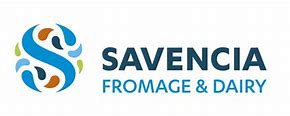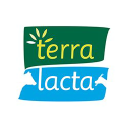Summary
As of 2020, the French butter market has depicted signs of recovery following previous volatilities due to factors like the abolition of EU dairy quotas and adverse weather conditions influencing milk production costs. Despite a slight downturn in 2020, butter production soared to sales of over €1.3 billion by May 2023, marking a decade high. The sector has navigated through the impacts of the COVID-19 pandemic without major disruptions, evident from the relatively stable revenue indexes. Internationally, while butter imports and exports are rebounding post-pandemic, they have not returned to pre-crisis levels, with a 2022 coverage rate of 0.44 and imports totaling $1,361 million against exports of $604 million.
Butter prices have been subject to inflation, especially between January and April 2023, seeing a 23.6% price increase. By 2022, the price per kilo of butter surged past €8.83, reflecting more than a 10% hike from the previous year.
French consumers demonstrate significant regional preferences and the butter market is characterized by a high concentration with 12 companies, with Lactalis and Savencia-Bongrain as key players, dominating the landscape.
French Butter Market: Current Trends and Consumer Patterns
In France, a nation known for its culinary excellence, butter is both a traditional and essential ingredient, with the country holding the title of the world's leading butter consumer at approximately 8 kilograms per person annually. Despite this, recent years have shown a decline in butter consumption, particularly in non-organic variants, pointing towards a shift in dietary preferences. Organic butter, on the other hand, has seen its popularity rise significantly, with an increase of almost 80% in penetration rate. Butter purchases in France reveal a certain degree of geographic disparity, with the western regions, including the culturally rich Brittany, showing higher than average consumption rates, possibly due to regional culinary habits like the famed Breton crêpes. The Paris region also accounts for a significant portion of butter purchases, a trend potentially attributable to the high population density. In terms of socioeconomic factors, the lower-middle class, constituting a large proportion of the population, is the primary purchaser of butter, accounting for between 40% and 45% of total volume purchases.
Following close behind are the upper middle class consumers, who make up roughly 30% of butter purchases. Interestingly, as the age of the person responsible for grocery shopping increases, so does the volume of butter bought, particularly among those over 65. Despite France's high per capita consumption, the butter market has faced considerable uncertainty and volatility. The country's dairy farmers have been under pressure due to variable factors such as weather conditions, competition, and market regulatory changes such as the abolition of EU milk quotas. These factors contributed to major market fluctuations, including the notorious price hike , where the price per tonne of butter jumped from between 2,400 and 2,600 euros to between 6,900 and 7,100 euros. However, this did not result in a direct increase in retail prices due to legislative constraints on price negotiations between suppliers and distributors.
A notable consumer trend is the gradual shift towards healthier and premium butter options. An increasing number of households are opting for organic or low-fat alternatives, which appeal due to their health benefits and lower cost compared to traditional butter. This trend is especially pronounced with the rise in "low-fat butter" sales, which might soon play a pivotal role in shaping demand. Interestingly, when searching for "Butter" through online platforms, interest in the product appears to be seasonal, peaking around the Christmas period.
Key Players in the French Butter Market: A Landscape of Tradition and Innovation
The French butter market is characterized by a blend of longstanding tradition and modern innovation, with key players shaping the industry's landscape.
Among these, two family-owned groups, Lactalis and Savencia-Bongrain, dominate the dairy market with a substantial portion of market share, thanks to their widely recognized sub-brands and commitment to quality.
- Lactalis stands as a giant with its President and Bridel brands. Founded by the Besnier family, Lactalis has established itself through a combination of artisanal techniques and global distribution, resulting in widespread consumer recognition and trust. The group's extensive range also includes a firm presence in the low-fat butter segment.
- Savencia-Bongrain is another significant entity, closely held by the Bongrain family. With the strategic acquisition of Elvir, Savencia has fortified its place in the market. Its presence is felt both in traditional butter offerings as well as in the specialized segment of low-fat butter, where it maintains a leadership position.
Aside from these two behemoths, several major dairy cooperatives contribute to the market's richness and diversity :
- Eurial, with its Grand Fermage brand, focuses on producing a variety of premium butter products from the finest milk of the cooperative's farms, ensuring excellence and rich flavor profiles in every pat.
- Laïta, under the Paysan Breton brand, offers a range of high-quality dairy products including butter that celebrates the region's heritage and commitment to natural, simple ingredients without artificial additives.
- Isigny-Sainte-Mère is renowned for its Beurre d'Isigny PDO (Protected Designation of Origin), a label that guarantees consumers are getting butter made from the milk of cows grazing in the lush landscapes of Normandy, reflecting the unique terroir in its taste.
- Celia operates with its lineup of brands like Le Marin and Chaussée aux Moines, catering to a variety of consumer preferences and emphasizing the company's roots in regional dairy craftsmanship.
The synergy of these players creates a robust and dynamic butter market in France. Together, they honor the rich culinary culture while embracing innovative approaches to meet the evolving tastes and needs of consumers both in France and abroad. This landscape paints a picture of a market that's both grounded in tradition and reaching towards the future, much like the layers of flavor in the very butter they produce.
to understand this market
Detailed content
 Inforamtion
Inforamtion
- Number of pages : 30 pages
- Format : Digital and PDF versions
- Last update : 02/11/2023
 Summary and extracts
Summary and extracts
1 Market summary
1.1 Definition and scope of the study
Butter is a solid emulsion of fat globules, air and water, produced by churning milk or cream and used as a food. The earliest evidence of butter dates back to 2000 BC.
France, a country renowned for its gastronomic heritage and cuisine, is a major player in the butter sector. Indeed,France is the world's leading consumer of butter, with around 8 kg per person per year.
The French market has suffered from a degree of volatility in recent years. This is due to several key macroeconomic and political events: firstly, in 2015 the EU abolished its quotas for dairy producers. This led to a collapse in prices, resulting in a sharp contraction in market size against a backdrop of falling incomes. Furthermore, in 2017 French farmers experienced another shock to butter supplies, with the rising price of cow's milk, but also poor weather conditions. The rise in cost was due to political decisions in 2015; production slowed as farmers became wary of the possibility of selling off their stocks. Meanwhile, demand remained stable, pushing prices up drastically. In 2016, a tonne of butter cost 2,500 euros; by 2017, it had risen to 7,000 euros. Consumers did not bear this cost, as retailers (supermarkets and hypermarkets) were unwilling to raise their prices , and producers were therefore forced to cut their margins.
In France, the butter market is highly concentrated. According to ACOSS, there were 12 companies registered under NAF code 10.51B ("Butter manufacturing") in 2022.
On aglobal scale, the market is expected to grow at an average annual rate of 4.52% until 2025. This growth comes against a backdrop of increased use and demand for butter in food processing, but also because demand for food products containing butter (e.g. pastries) is on the rise.
overall, consumption of butter and margarine is declining, while that of organic butter is rising steadily.
1.2 Strong growth on the global market
Global butter market size World, ****-****, in billions of US dollars Source: ****
*Forecasts
The global butter market is expected to grow strongly at a CAGR of *.**% to ****.
This growth is driven by increased use and demand for butter in food processing. In addition, consumer demand for foodservice foods is increasing, ...
1.3 A volatile domestic market
butter production in France is relatively volatile, as shown in the following graph:
Butter market size (***) France, ****-*****, in millions of euros Source: ****
In ****, the EU as a whole saw a drop in butter production, against the backdrop of the end of milk quotas. Since the ****s, EU farmers had been ...
1.4 International trade
In this section, we analyze the butter trade in France. In particular, we use the UN Comtrade database and the code ****** - Dairy products; milk derivatives, butter.
Foreign trade in butter France, ****-****, in million US dollars Source: ****
The graph above shows France's butter trade with the world between **** and ****, as ...
2 Demand analysis
2.1 Characteristics of French consumers
Geography
Butter consumption is highly heterogeneous across France, as shown in the following graph:
Breakdown of butter purchases by volume France, ****, in Source: ****
In fact, butter consumption in the West is over-represented. This can be explained by the fact that this region has a culinary culture in which butter plays a ...
2.2 Butter consumption
Despite the fact that France is the country with the highest per capita butter consumption in the world, butter consumption by French households is falling. This has been penalized by the decline of breakfast in French eating habits. Although this meal accounts for **% of butter consumption, it is losing popularity. [***]
The ...
2.3 Demand trends
Cyclicity
Search interest for the term "Butter France, ****-****, in Google Trends index Source: ****
The graph above represents the proportion of searches for a given term in a given region over a given period of time, relative to when it was most searched for (***). Thus, a value of ** means that the ...
2.4 France's favourite butter brands
The graph below is based on OpinionWay's survey of French consumers' favorite brands in March ****. These are respondents' answers to the question "Do you like this brand of butter?" for each brand, the percentage corresponds to the proportion of respondents who answered "yes".
Président is France's favorite butter brand, with ...
3 Market structure
3.1 Market overview
Number of companies and employees in the butter manufacturing sector (***) France, ****-****, in units Source: ****
The French butter market is highly concentrated, with just ** companies registered under NAF code **.**B in ****. Between **** and ****, this number has remained unchanged, implying that the stability and market power of existing companies are significant. The ...
3.2 Production
in order to observe variations in butter prices, it is interesting to study the evolution of production in terms of value and volume:
Butter production, in value and volume France, ****-****, in millions of euros and thousands of tons Source: ****
We can see thatbetween **** and ****, the value of production increased faster ...
3.3 Distribution
Butter sales by distribution channel France, ****, in percent Source: ****
Butter is mainly bought in hypermarkets, where almost half (***) of sales took place in ****. Supermarkets come in second with over a fifth of sales. E-commerce, which is expanding for all products, accounted for *.*% of butter sales in ****, up from *.*% in ****. Convenience store ...
3.4 A market facing volatility due to uncertainty
Dairy farmers are facing uncertain conditions on the butter market. Firstly, the European Union quotas put in place to alleviate this uncertainty were abolished in ****. In addition, production is uncertain due to unstable weather conditions. This weather instability is set to increase in the coming years with climate change (***). Finally, competition ...
4 Offer analysis
4.1 Product typology
There are many different types of butter, depending on the way it is produced or the additives used. Below is a comprehensive list:
Beurre cru or raw cream butter: this butter is made exclusively from "intact" cream, in the sense that it has not undergone any sanitizing treatment, apart from cooling ...
4.2 Price analysis
The following graph shows the evolution of the consumer price index for butter over the last ten years:
Trend in the consumer price index for butter France, **** - **** Source: ****
Since ****, the price of butter has risen significantly, a trend that will be exacerbated in **** in the context of inflation in the ...
4.3 Supply trends
A fall in milk production against a backdrop of unfavorable milk powder prices and a heatwave: A sustained rise in butter prices Tensions in the distribution sector Increased temptation to export
Inflation and butter prices
Butter has not escaped the general rise in prices, and even seems to be one of ...
5 Regulations
5.1 Regulations
The regulations covering butter are summarized in the following legislation:
Regulation (***) Regulation (***) Decree no. **-**** of December **, **** regulating the manufacture and sale of butter and certain dairy specialties. Decree no. **-**** of December **, **** regulating the manufacture and sale of margarine and other fat blends not exclusively of dairy origin.
In addition, ...
6 Positioning the players
6.1 Segmentation
- Savencia Fromage & Dairy groupe
- Eurial Coopérative
- Isigny-Sainte-Mère (Coopérative)
- Sodiaal Groupe (Coopérative)
- Lactalis Groupe
- Loyez Woessen - Abondia
- Terra Lacta Cooperative
 List of charts
List of charts
- World butter market size
- Per capita butter consumption
- Butter manufacturing sales (domestic and export markets)
- The impact of Covid-19 on the butter market (NAF 10.51B)
- Foreign trade in butter
All our studies are available online in PDF format
Take a look at an example of our research on another market!
Latest news
Companies quoted in this study
This study contains a complete overview of the companies in the market, with the latest figures and news for each company. :
 Choosing this study means :
Choosing this study means :
Access to more than 35 hours of work
Our studies are the result of over 35 hours of research and analysis. Using our studies allows you to devote more time and added value to your projects.
Benefit from 6 years' experience and over 1,500 industry reports already produced
Our expertise enables us to produce comprehensive studies in all sectors, including niche and emerging markets.
Our know-how and methodology enable us to produce reports that offer unique value for money.
Access to several thousand articles and paid-for data
Businesscoot has access to all the paid economic press as well as exclusive databases to carry out its market research (over 30,000 articles and private sources).
To enhance our research, our analysts also use web indicators (semrush, trends, etc.) to identify market trends and company strategies. (Consult our paying sources)
Guaranteed support after your purchase
A team dedicated to after-sales service, to guarantee you a high level of satisfaction. +44 238 097 0676
A digital format designed for our users
Not only do you have access to a PDF, but also to a digital version designed for our customers. This version gives you access to sources, data in Excel format and graphics. The content of the study can therefore be easily retrieved and adapted for your specific needs.
 Our offers :
Our offers :
the butter market | France
- What are the figures on the size and growth of the market?
- What is driving the growth of the market and its evolution?
- What is the positioning of companies in the value chain?
- Data from several dozen databases
Pack 5 études (-15%) France
- 5 études au prix de 75,6€HT par étude à choisir parmi nos 800 titres sur le catalogue France pendant 12 mois
- Conservez -15% sur les études supplémentaires achetées
- Choisissez le remboursement des crédits non consommés au terme des 12 mois (durée du pack)
Consultez les conditions du pack et de remboursement des crédits non consommés.





 Suppliers refuse to accept Lactalis' proposed milk price increase - 05/02/2024
Suppliers refuse to accept Lactalis' proposed milk price increase - 05/02/2024
 Sodiaal launches a campaign to support its Candia, Yoplait and Entremont brands - 09/09/2023
Sodiaal launches a campaign to support its Candia, Yoplait and Entremont brands - 09/09/2023

















